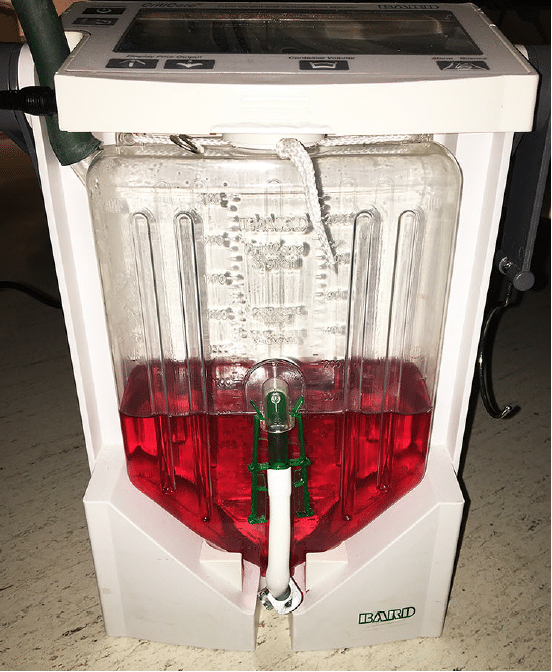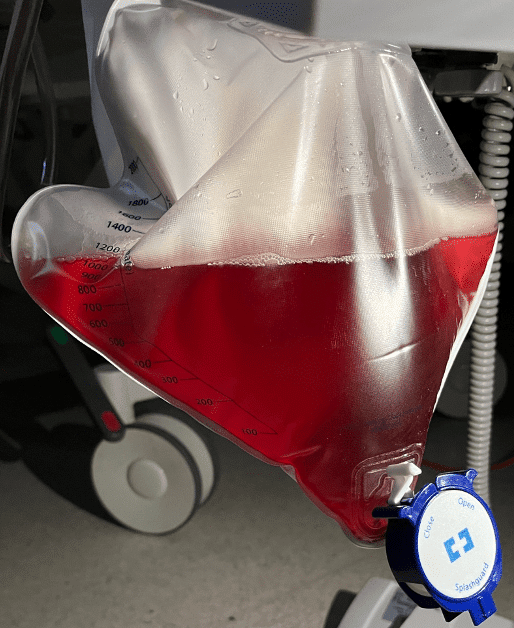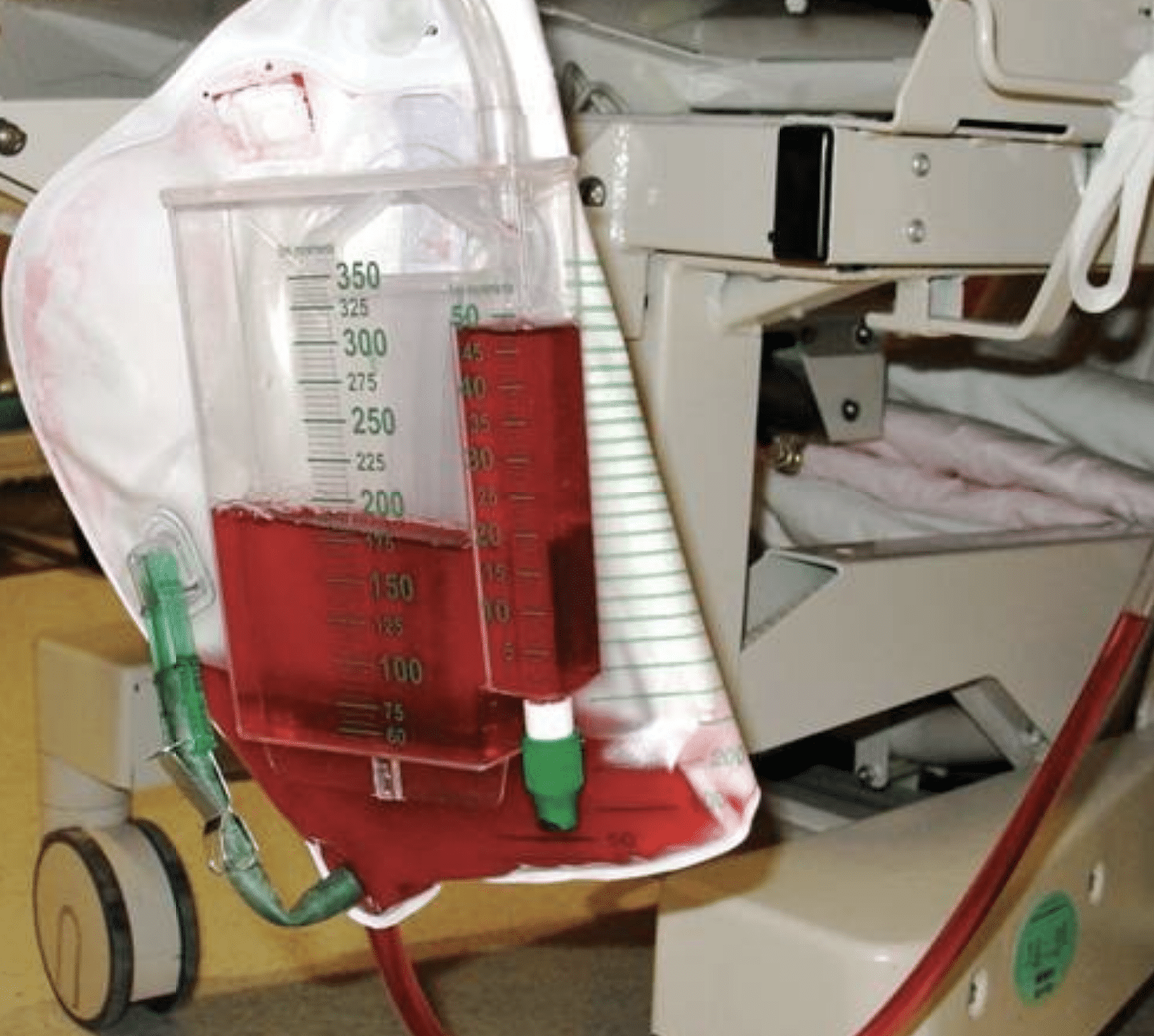Cherry Red or Raspberry urine
When the urine is red and free of haem pigments (e.g. erythroctyes, haemoglobin or myoglobin), then the urine may be discoloured and described as ‘raspberry’, or ‘cherry-red’. Most common causes of the discolouration include:
- Medications
- amino-salicyclic acid derivatives – mesalazine/paraaminosalycylic acid/sulfasalazine
- doxorubicin, hydroxocobalamin, ibuprofen, phenothiazines, phenolphthalein, propofol, rifampicin/rifampin
- Dietary ingestants
- beeturia, rhubarb, blackberries, food dyes
- Metabolic abnormalities
- porphyria, urate crystals
Hydroxocobalamin
Early features of cyanide poisoning include nausea, vomiting, headache, dyspnoea, tachypnoea, hypertension, tachycardia, collapse and seizures; with more progressive features including hypotension, bradycardia, tetany, drowsiness, respiratory depression and coma.
“Cherry-red skin” is a clinical feature described in cyanide poisoning – although infrequently observed – thought to be due to high venous blood oxyhaemoglobin concentration, but there will not be a change in the colour of the urine. The recommended treatment for cyanide poisoning with hydroxocobalamin, however, can cause a “cherry-red” or “raspberry” urinary discolouration.
Hydroxocobalamin (the active ingredient in Cyanokit®) is the hydroxylated form of vitamin B12 and binds cyanide ions with a high affinity due to the trivalent cobalt ion in its molecular structure. Each hydroxocobalamin molecule can bind one cyanide ion, forming cyanocobalamin which is subsequently excreted in the urine.
Hydroxocobalamin, when given for cyanide poisoning at the recommended dose of 5g, may cause a temporary reddish discolouration of the skin, plasma, urine, and mucous membranes. In clinical trials, 100% of healthy volunteers experienced this chromaturia with administration of ≥5g hydroxocobalamin with other common effects including erythema, rash (predominantly acneiform appearance) and increased blood pressure.
The colour change typically resolves within a few days to weeks but has been reported up to 35 days post administration. While benign, the urinary discolouration may interfere with colorimetric laboratory analyses, and may impede intermittent haemodialysis due to the pigment distribution across the dialysate membrane triggering colorimetric blood leak sensors.
Treatment of pernicious anaemia or vitamin B12 deficiency typically involves 1mg injections daily or alternate daily for 1 to 2 weeks – meaning the dose is five thousand times smaller than the single dose used in cyanide poisoning, and therefore urinary discolouration is not expected to be observed.
Clinical cases and images




References
- Borron SW, Baud FJ, Barriot P, Imbert M, Bismuth C. Prospective study of hydroxocobalamin for acute cyanide poisoning in smoke inhalation. Ann Emerg Med. 2007 Jun;49(6):794-801
- Shepherd G, Velez LI. Role of hydroxocobalamin in acute cyanide poisoning. Ann Pharmacother. 2008 May;42(5):661-9
- Cescon D, Juurlink D. Discoloration of skin and urine after treatment with hydroxocobalamin for cyanide poisoning. CMAJ 2009; 180(2): 251
- Warner MA, Mauermann WJ, Armour S, Barbara DW. Red urinary discolouration following hydroxocobalamin treatment for vasoplegic syndrome. Can J Anaesth. 2017 Jun;64(6):673-674
- Koratala A, Chamarthi G, Segal MS. Not all that is red is blood: a curious case of chromaturia. Clin Case Rep. 2018 Apr 6;6(6):1179-1180.
- Chee-How E. What drug was given?! Twitter 2022
- Hydroxocobalamin. Therapeutic Goods Administration: Product and Consumer Information.
- Nickson CP. Cyanide Poisoning. CCC. LITFL
- Nickson CP. Hydroxocobalamin. CCC. LITFL
- Nickson CP. Raspberry urine? Unusual Urine. LITFL
[cite]
Unusual Urine
Clinical cases
Physician in training. German translator and lover of medical history.
